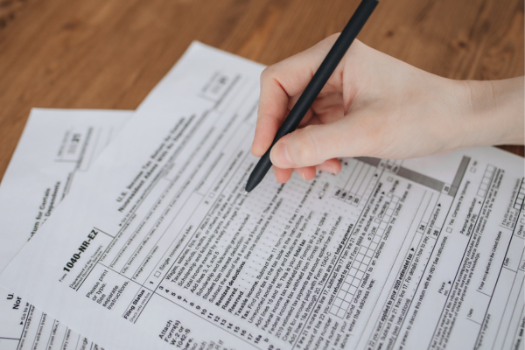
How to Build a High-Converting Bid Proposal Template
In construction, a strong bid proposal can win or lose the job.
It’s your first impression. It shows the client how serious, capable, and professional you are.
But many proposals get tossed out fast. Why? Because they’re confusing, incomplete, or hard to follow.
With a clean, well-structured template, you save time—and increase your win rate.
In this blog, we’ll break down how to create a bid proposal template that’s easy to use and hard to ignore.
Let’s make sure your next proposal gets a yes.

What Every Winning Proposal Should Include
The best proposals are clear, complete, and to the point. Here’s what you need in every one:
Cover Page
Start strong. Include your logo, company info, client name, project title, and submission date.
Executive Summary
Give a short overview of the project. Summarize your approach, timeline, and what makes your team a good fit.
Scope of Work
Explain exactly what’s included—tasks, materials, labor, and responsibilities. Be clear and detailed.
Cost Estimate
Break down the pricing. List each item clearly—materials, labor, equipment, overhead. Use easy-to-read tables.

Timeline
Show key phases, start and finish dates, and any milestones.
Terms and Conditions
Add payment terms, warranties, and any legal info.
About Your Company
Share experience, licenses, insurance, and team qualifications.
Signature Section
Leave space for both parties to sign and agree.
Having this structure in your template means you’ll always be ready to send a complete proposal fast.
Design Tips: Make It Easy to Read
A good proposal should look clean—not crowded or confusing.

Here’s how to keep it readable and professional:
- Stick to one or two fonts
- Use your logo and brand colors (but don’t overdo it)
- Add white space so it doesn’t feel cramped
- Use headings, bullet points, and short paragraphs
- Include charts or visuals if they help explain costs or timelines
Also, save it as a PDF before sending. That way, your formatting stays clean and nothing shifts around.
Make sure it’s mobile-friendly, too. Many clients check documents on their phones or tablets.
How to Write a Proposal That Sells
The structure is important—but your writing matters too.
Here’s how to write a proposal that connects and converts:
Speak to their needs
Don’t make it all about you. Show you understand what the client wants.
Keep it simple
Avoid fancy words or industry jargon. Use plain language that anyone can understand.
Explain your value
What makes you different? Why should they pick you over someone else?
Be confident, not pushy
Use strong but respectful language. Avoid begging for the job.

Proofread it
Spelling or grammar mistakes make you look sloppy. Always double-check.
Use active voice
Say “We will install the system,” not “The system will be installed.” It sounds more direct and professional.
Small writing tweaks can make a big difference in how your proposal feels to a client.
Using BidLight to Build & Track Better Proposals
BidLight helps contractors build smart, high-converting proposals faster.
Instead of starting from scratch each time, you can create a master template once—and reuse it.
Add your company info, branding, standard terms, and pricing tables. Then just tweak the job-specific details.
BidLight also lets you:
- Track which proposals were viewed or signed
- Compare win rates over time
- Improve based on what works best
With one platform, your team stays consistent—and your proposals look polished every time.
It saves hours of manual work and helps you win more of the right jobs.
Conclusion: A Strong Template Wins More Work
A great bid proposal shows your value before you even start the job.
With a solid template, you save time, avoid mistakes, and look more professional.
Clients notice that.
Use the structure, writing tips, and design ideas we shared here. Then make it even easier by using BidLight to manage the process.
Your next project win might come down to how well you present yourself.
So build it right—and bid smart.